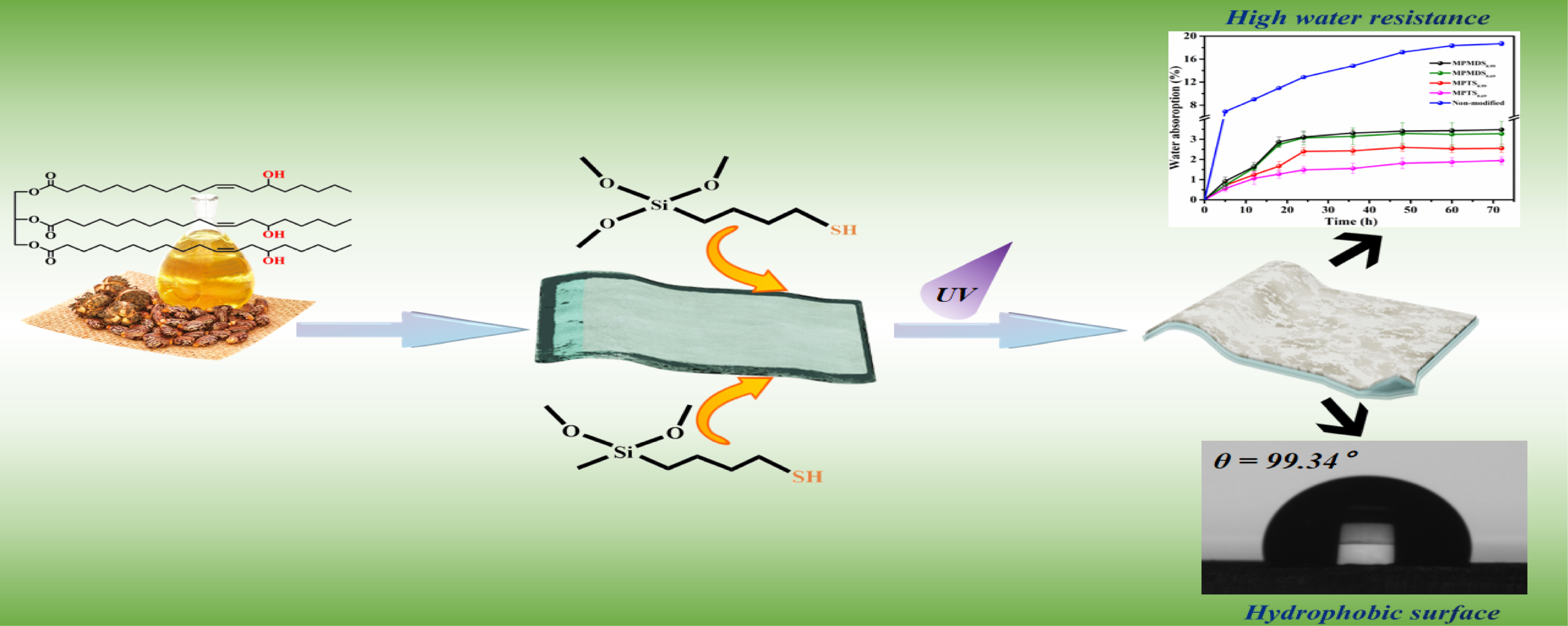 Open Access
Open Access
ARTICLE
Enhanced Water Resistance Performance of Castor Oil—Based Waterborne Polyurethane Modified by Methoxysilane Coupling Agents via Thiol-Ene Photo Click Reaction
1 Key Laboratory for Biobased Materials and Energy of Ministry of Education, College of Materials and Energy, South China Agricultural University, Guangzhou, 510642, China
2 Guangdong Laboratory for Lingnan Modern Agriculture, Guangzhou, 510642, China
* Corresponding Authors: Ying Luo. Email: ; Chaoqun Zhang. Email:
Journal of Renewable Materials 2022, 10(3), 591-604. https://doi.org/10.32604/jrm.2022.017790
Received 07 June 2021; Accepted 07 July 2021; Issue published 28 September 2021
Abstract
Nowadays, waterborne polyurethanes (WPUs) prepared from renewable resources has attracted more and more attention. However, due to its structure, the prepared films easily swells in water and greatly affects the application range of WPUs. Therefore, solving the problem of water resistance is a way to improve the application range of WPUs. In this study, a series of WPU dispersions were prepared using castor oil as the bio-based polyol. Besides, the thiol-ene photo click reaction was carried out on the WPU films for silane modification. The effect of the silane modification on the chemical structures of the WPU dispersions and the properties of the WPU films was investigated and discussed. The results revealed that the WPU dispersions had a smaller particle size and potential, showing excellent stability. In addition, the modified WPU films showed highly water resistance which 72 h water absorption could be reduced to 1.94% and the contact angle was up to 99.34°. Moreover, the modified WPU films also exhibited excellent solvent resistance (in acid and salt solution) and thermal stability. This study can provide a new way to improve the water-resistance, hydrophobicity, and thermal stability of bio-based waterborne polyurethane for potential application in painting, adhesives and inks.Graphic Abstract

Keywords
Cite This Article
 Copyright © 2022 The Author(s). Published by Tech Science Press.
Copyright © 2022 The Author(s). Published by Tech Science Press.This work is licensed under a Creative Commons Attribution 4.0 International License , which permits unrestricted use, distribution, and reproduction in any medium, provided the original work is properly cited.


 Submit a Paper
Submit a Paper Propose a Special lssue
Propose a Special lssue View Full Text
View Full Text Download PDF
Download PDF Downloads
Downloads
 Citation Tools
Citation Tools